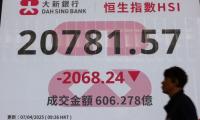At the time of Independence, there was no manufacturing industry in Pakistan. However, soon thereafter Pakistan realised the importance of industrial and manufacturing units, and several such units were set up in diverse sectors.
This diversification of industrial production resulted in a radical transformation of Pakistan’s exports, which to a great extent freed the country from declining and unstable foreign exchange earnings.
Although the share of manufactures in its national output is not as large as in many other developing countries, the export orientation of Pakistan’s industrial production is much greater. During the early 1950s, export of manufactures was merely Rs6 million with a share of less than a fraction of a percentage. As infrastructure and industry developed, our exports increased to Rs1.7 billion in the 1970s, accounting for about 50 percent of the overall exports.
During the 1990s, our export of manufactures further increased to Rs133 billion, representing about 65 percent of the overall exports. During the last decade, such exports have risen at a rate of about 15 percent, from Rs467 billion to Rs1.4 trillion. As the overall percentage of exports, manufactures made for over 70 percent.
On the other hand, the export of crude material and commodities, which used to represent more than 90 percent of Pakistan’s exports at the time of Independence, fell significantly to less than four percent during the last decade.
Pakistan’s main exports can be divided into several categories. The category of export commodities primarily includes fresh and live animals and raw food items such as rice, grain and pulses, beverages and tobacco. The value of these exports from Pakistan has been increasing; it was merely Rs112 million in the 1950s, then increased to Rs17 billion in the 1990s and in 2010-11, the value rose to Rs373 billion. In terms of percentage of the overall exports, it was 6, 10 and 18 percent respectively.
Fish and fish preparation exports come with a bonus and their earnings have also been maintained quite well. This category’s contribution in terms of the overall exports has almost always been constant at 2 percent. In the 1950s, the quantum was Rs10 million, but then it rose to Rs150 million in the 1970s and then to Rs5 billion in the 1990s. During the last decade, the exports have grown at a rate of about 18 percent, from Rs7.7 billion to Rs25 billion.
Rice is another specialty export of Pakistan. In the initial days, rice crop was sufficient only to meet the local demand; there was barely any left to export. After the green revolution in the late 1960s, the export of surplus rice started. Though the export was dependent on climatic conditions and natural disasters, Pakistan was still able to export rice in increasing quantities. In the 1970s, our rice exports were around Rs300 million and rose to Rs10 billion in the 1990s – respectively making about 10 and 6 percent of the overall export proceeds. During the last decade, rice exports tremendously increased at an average rate of about 24 percent, from Rs27.5 billion to Rs185 billion.
Pakistan has also been exporting fresh fruit and nuts. The quantum of export was initially low but gained momentum with time. Exports in this category increased from Rs9.3 million in the 1950s to Rs20 million in the 1970s, and then to Rs1 billion in the 1990s – representing 0.6 percent of the overall exports. It was in the 2000s that exports from this category increased from Rs4.5 billion to Rs22 billion – making 0.8 and 1.1 percent of the overall exports. The increase during the current decade was around 20 percent, which is a very healthy sign.
Exports from the category of beverage and tobacco were very low in the beginning. They started picking up during the 1970s when the export was about Rs50 million, representing 0.1 percent of the overall exports. During the 1990s, their export stood at around Rs270 million, around 0.2 percent of the overall exports. The average growth during the last 10 years was more than 30 percent, from Rs356 million it rose to Rs. 4.2 billion. As a percentage of exports, this was typically less than 0.2 percent of the overall exports.
The trading data of the sugar and honey category is very interesting. Pakistan is both importer and exporter in this category. In the early days, the production of sugar was adequate enough to meet the local demand. Later, in the early 1960s, Pakistan started exporting this commodity. However, there were some years when Pakistan had to import sugar, but it predominantly remained an export commodity. The situation changed during the last decade; now Pakistan primarily imports sugar, rather than exporting it. This does not portray a favourable position for Pakistan.
Raw cotton, hides and wool are Pakistan’s old export products. However, they are now increasingly exported after being domestically processed in the form of cotton, yarn, textile, garments, leather and woollen goods. Due to the diversification of the production structure, the curtailment of export of these raw materials was fairly rapid. Steps were taken to increase the production of these raw materials with a view to retain their established export markets. This was an easy task in view of the comparatively inelastic production structure of Pakistan’s agriculture sector.
In the absence of a manufacturing facility, Pakistan started exporting raw cotton in order to acquire foreign exchange and substitute it for cotton and textile products. In the meantime, manufacturing facilities started being developed to help process raw cotton into cotton fabric, textile yarn, textile fabric and other textile products. In the early 1950s, the value of raw cotton exported stood at Rs800 million; it was reduced to Rs600 million in the 1960s. But in the same period there was a significant growth in the production of raw cotton and by the 1990s, the export value had gone up to around Rs14 billion.
During 2001-2010, the export proceeds of raw cotton increased to Rs38 billion from Rs3.8 billion, with an average increase of about 29 percent per year. However, if seen in terms of the total percentage of cotton exported in comparison to our overall exports, the percentage had drastically reduced. For instance, the percentage of raw cotton exported in the 1950s was around 40 percent, it then came down to 30 percent in the 1970s, and further reduced to eight percent in the 1990s. During the last decade, our cotton exports hovered around less than two percent, sometimes even as low as 0.7 percent.
However, it is a positive indicator that Pakistan is now in a position to export finished products rather than raw cotton. This favoured both the producer and manufacturer but was essentially facilitated through government policies and tariff control.
A similar trend was noticed in the case of raw hides and skins. Pakistan initially exported these products, but later when tanneries were developed, leather became the choice of export. When leather factories were established to produce products, which included leather garments, bags and footwear, the export market was quite absorbent. In terms of value, the export proceeds from these products were around Rs33 million in the 1950s, then they came down to Rs19 million in the 1970s, and then further reduced to Rs1 million in the 1990s. There was growth in the export proceeds of these products during 2001-02 – from Rs24 million to Rs146 million – but this was primarily due to the devaluation of rupee and increase in the price of hides and skins.
However, the relative weight of exports has reduced significantly; it was about 1.65 percent in the 1950s, then came down to 0.6 percent in the 1970s and then remained somewhere less than 0.01 percent from the 1990s onwards.
The writer is the chairman of the Atlas group of companies.
Email: yhs@atlas.com.pk
In addition to this, Trump has already ordered further crackdown on immigrants including students
Many women are told to simply 'pray more' or 'stay strong' instead of being encouraged to seek professional help
For Pakistan’s economy, it also becomes unparalleled opportunity to stimulate various sectors
Since 2023, Indian media has, as usual, overwhelmingly backed New Delhi’s point of view concerning IWT
Beijing was among first to denounce the tariffs, calling them “unjustifiable” and vowing strong countermeasures
With this unprecedented buildup, Diego Garcia has transformed into ticking time bomb of apocalyptic power







